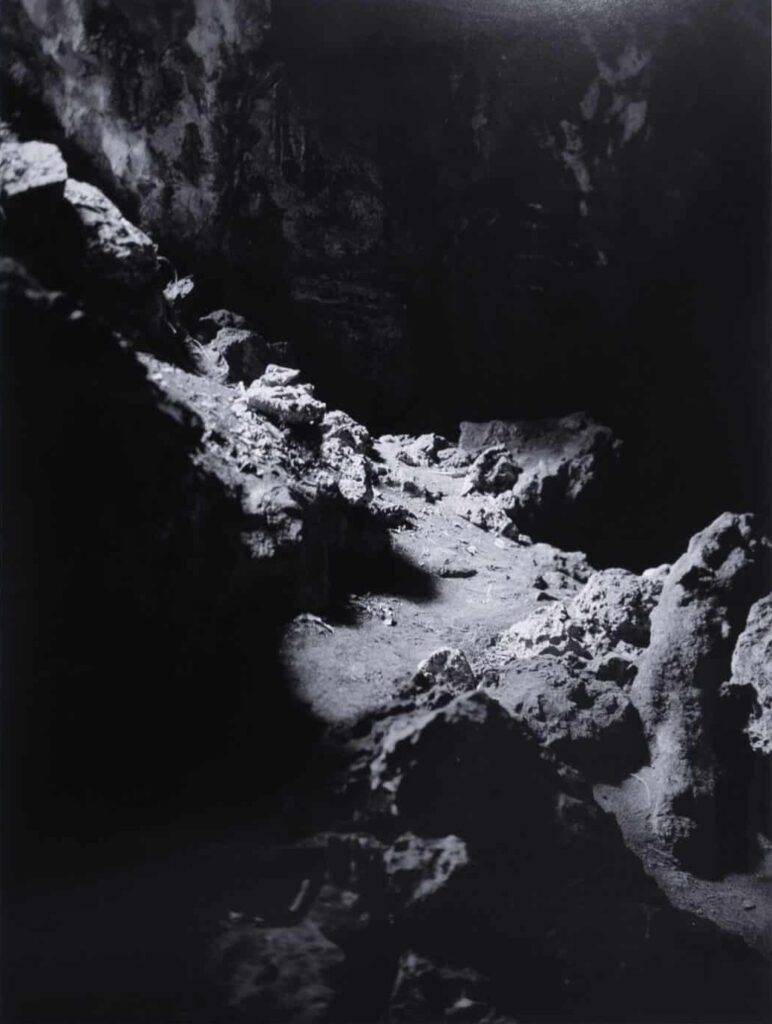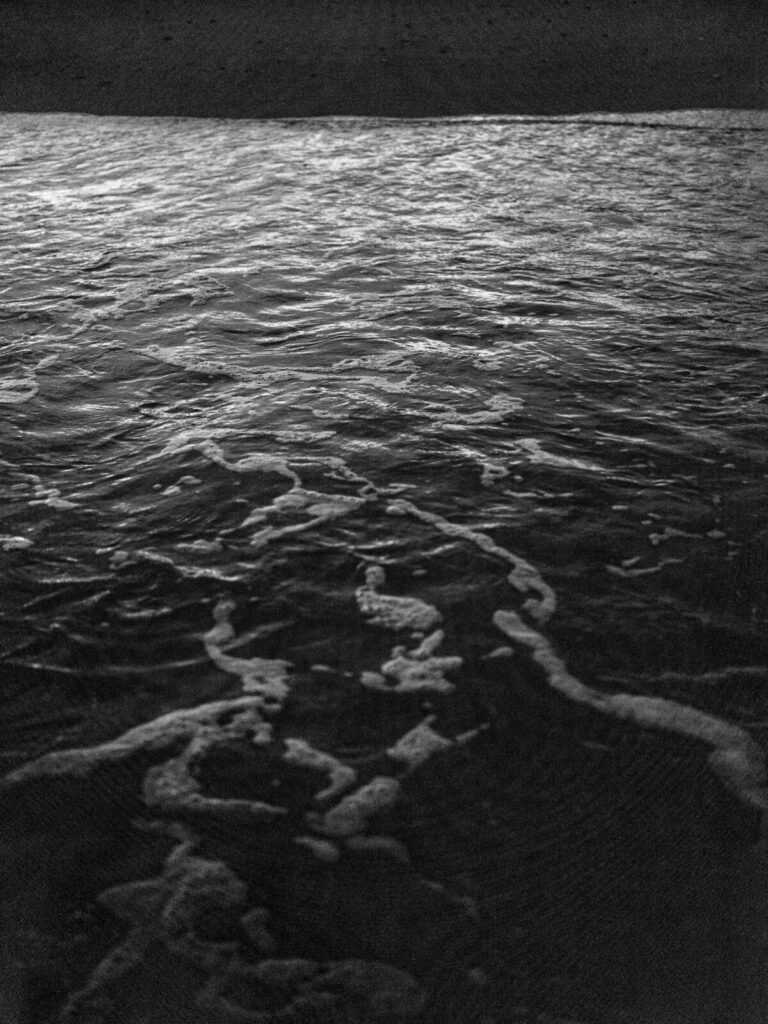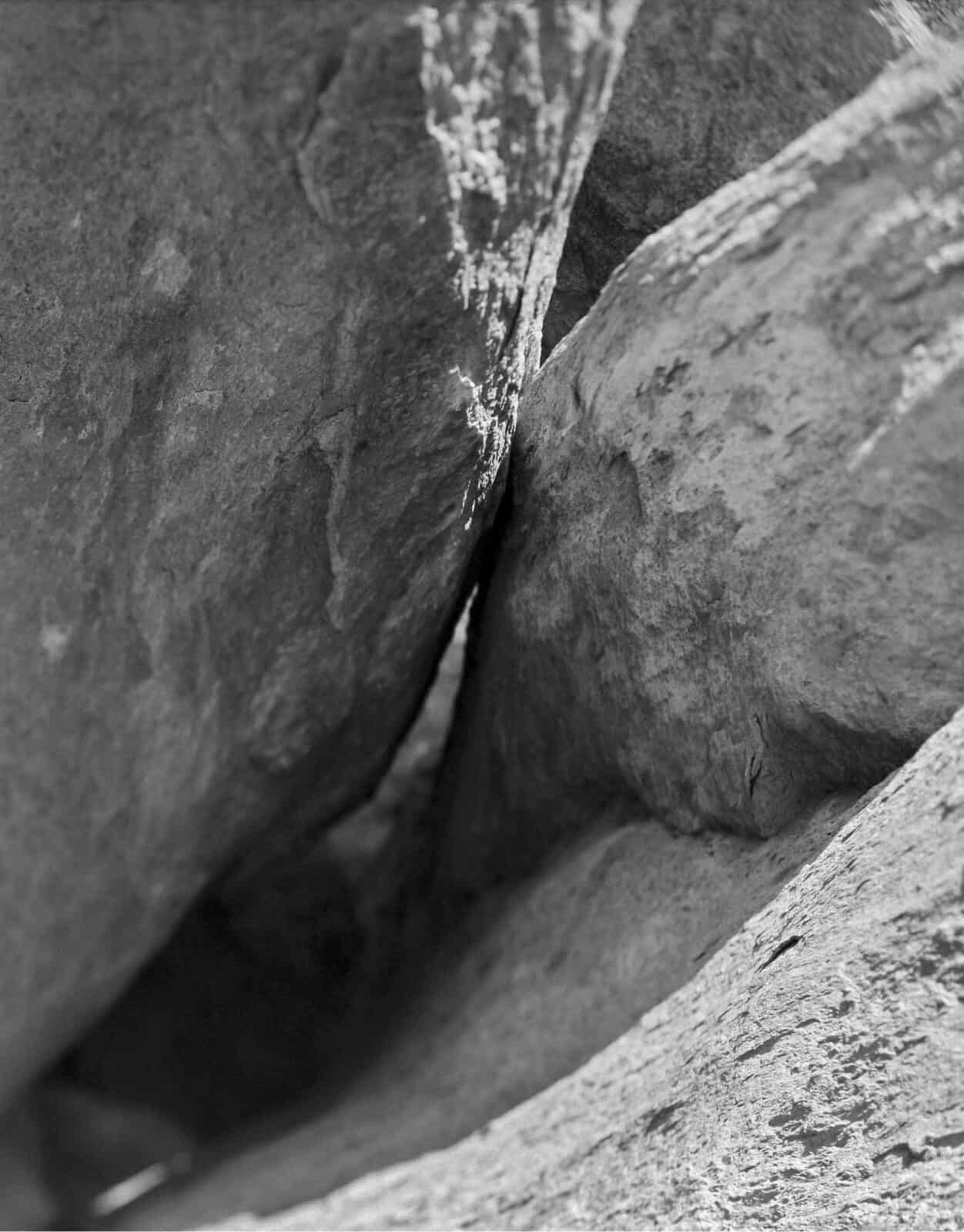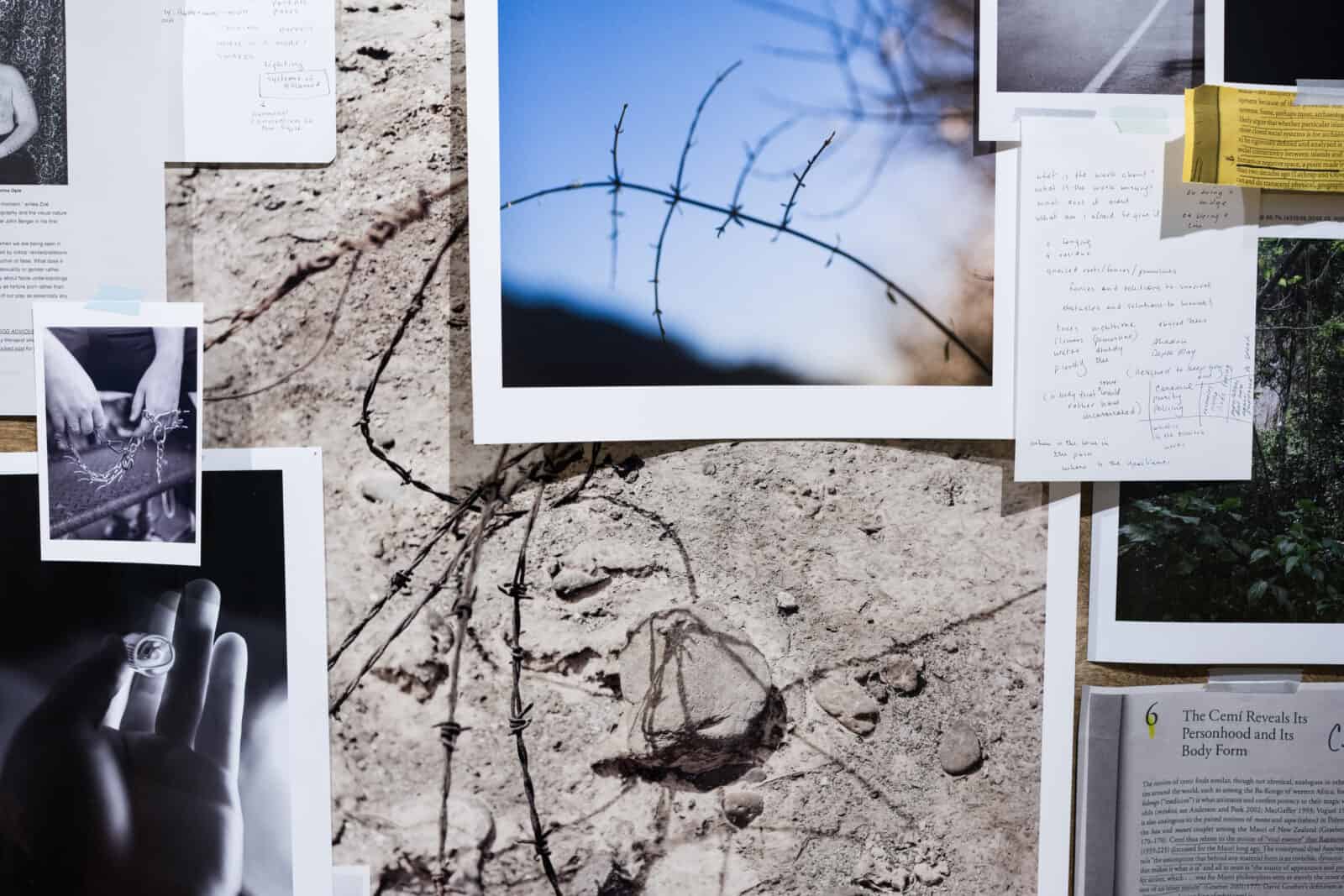Sunlight slants over stone, drawing us inward, up the passage into limestone shaped by rain and sea water and images and ideas from artists centuries ago.
Two photographs look into the Cabachuelas Caves in Puerto Rico. They align as though the photographer is moving into the tunnel, standing surrounded with the feel and scents of the air, stalactites, stone and salt water. The images look like a natural pair, but Elle Pérez took them minutes apart.
Pérez finds a unique power in stretching time, they said. These images set two moments side by side in a place that has held light and life for hundreds of years.


Two photographs of the Cabachuelas Caves in Puerto Rico show sunlight slanting down the tunnel in Elle Pérez: Intimacies at Mass MoCA. Photos by Elle Pérez, courtesy of Mass MoCA.

Elle Pérez shows a collage of images and ideas in Intimacies at Mass MoCA. Press photo courtesy of Mass MoCA
“I love how much (the cave) feels like a stage for everything that can happen, has happened, will happen there,” Pérez said. “… It must have been the first camera obscura, the first phenomenon of light on the stone walls …”
They are seeing their work here today at Mass MoCA, in new configurations on walls the hazy blue of the July summer sky. Fresh off a plane from Rome, Pérez came to see the last steps in the installation of Intimacies, their new show with curator Susan Cross, opening in Building 6.
Their partner talks about the cave image as a psychic space, they said, one that holds a gentle relationship with a human body. Pérez has grown an international name for compassion and insight and has brought their work around the world.
They have shown their photographs from the MoMA and the 2019 Whitney Biennial to the 2022 Venice Biennale. Winner of the internationally acclaimed Rome Prize, they have just returned from six months at the American Academy in Rome, and now they are beginning an assistant professorship at Yale.
‘I love how much (the cave) feels like a stage for everything that can happen, has happened, will happen there. … It must have been the first camera obscura, the first phenomenon of light on the stone walls. — Elle Pérez
Susan Cross met them years ago, she says, when they came to Williams to teach as a visiting artist, and kept in touch when they left for the Art, Film, and Visual Studies department of Harvard University.
She has followed Pérez’ work for years, and now she is bringing together a wide range of their Devotions series, partly shown at the Carnegie and Baltimore museums of art, and newer work they have made for the Biennale.
Pérez is known for images of love and friendship, the contest and contact between athletes, the balance in bodies coming together with care and respect. Their images show trust and familiarity, Cross said. They explore land as a metaphor for the body and land as a living place, an ecosystem — bodies of water and the complex systems of living bodies — their images are full of multitudes.
“I think of the ocean as breathing, like a meter in a poem,” Pérez said.


‘I think of the ocean as breathing, like a meter in a poem.’
They group images in constellations. Sometimes they form a clear visual pair, like the companion portraits of Ally and Tomashi as the show begins. The two stand holding each other, one resting her head on the other’s shoulder, in deep and casual closeness, and they look out together as though they are talking with an old friend. Between the two images the light changes, as they were taken at sunset.
Sometimes Pérez groups images for their resonances — a hand in shadow hangs beside a night image of moonlight on the sea. Pérez feels echoes between the body and the landscape, they said. Light rims the hand, and liquid shines between the fingers like sea foam.
Some of the large-format photos of landscapes play optical games, they said. The plane of focus shifts so that an element in the front looks like it’s joining another farther back, like the palmetto fronds overlapping in light and shadow.

Stone curves and touches in a black and white image in Intimacies at Mass MoCA. Press photo courtesy of Mass MoCA
“If I did that to a person, you’d really notice,” they said. “Plants allow for that play without being obvious … like the mangrove roots wrapped around each other — there’s a visceral somatic experience to the images, and to the overall experience of (walking into the room and absorbing them.)”
And then nearby someone is standing in the surf, salt water to their knees and the wind in their comfortable wide-necked shirt.
In Pérez’ lens, people have an openness, Cross said — they have the strenth to be natural. They look at the world and feel it around them. They are candid — not caught in action, they are aware of the camera and the photographer and they are looking out confidently, heads up and shoulders open.
“I think what I’m trying to do is find something I recognize from the person in the world,” Pérez said, “and bring that into the photograph.”
The process takes time, they said. It means waiting, talking, bouncing ideas back and forth and thinking through an image. Often they photograph people they have known for a generation or more. Sometimes they have just met and shared an awareness, a warm energy, Pérez said, mulling over the feeling of talking with someone for the first time and feeling they can be a friend.
“Different people need different ways of working,” they said. “With some I can say ‘this is what I’m looking for,’ friends I’ve been photographing for 10 years and more, like this one — they’re a boxer and an artist. I can be very direct with them, and in turn they are with me.”
Many of the people here are friends, fellow artists, their partner — as they create work together, they explore human connection and respect in the lives of queer and trans and BIPOC folk. Pérez is part of the communities they photograph, Cross said.
‘I’m trying to … find something I recognize from the person in the world.’ — Elle Pérez
She recalls their early photography in the Bronx, in clubs and concerts, on dance floors. They were safe spaces for young, queer black and brown folk, she said — places where people were coming out to be with friends, sometimes where they were coming out.
Cross feels in this newer work a deep sense of texture and touch. Pérez made these images in and after the pandemic, when physical touch became rarer, when people were becoming aware of isolation in new ways.
Today, with the rise in legislation against the trans community, the images feel timely to her in their warmth and strength and integrity. They suggest explorations of displacement, diaspora, attempts in the U.S. to legislate control over people’s bodies
“It’s frightening,” Cross said, “and it shows the contradictions in what we will allow to change and what we will not.”

Hands hold a leather belt gently and firmly at the waist in the work of Bronx-born Puerto Rican photographer Elle Pérez. Press photo courtesy of Mass MoCA.
Pérez touches on ideas both open and proscriptive, looking at myths and stories and systems that shape thought today. They knew they wanted to go to Rome, they said, on a day in the Museo de Arte de Ponce in Puerto Rico a couple of years ago.
They were looking at Italian paintings from the 15th, 16th and17th centuries, and they wanted to understand the progression, the lineage of thought that led to these images, and from then to now. A belief system like Catholicism can have a complex past and present … in Puerto Rico, where they have family, and in New York, where they were born.
Their images reveal a depth of internal life, sometimes hidden and drawing the eye, sometimes at the boundaries, like the tide and the mangrove roots, protective, adaptive.
Sometimes they can hold loss and persistance together, like the caves important to the Taíno people — when the subjects are ancient, and they have lived many lives themselves, Pérez said, photography can preserve them in a moment, at one point in time. Palmetto leaves are moving in the wind, and someone is looking up with the sky in their eyes.

Elle Pérez shows a collage of images and ideas in Intimacies at Mass MoCA. Press photo courtesy of Mass MoCA

